


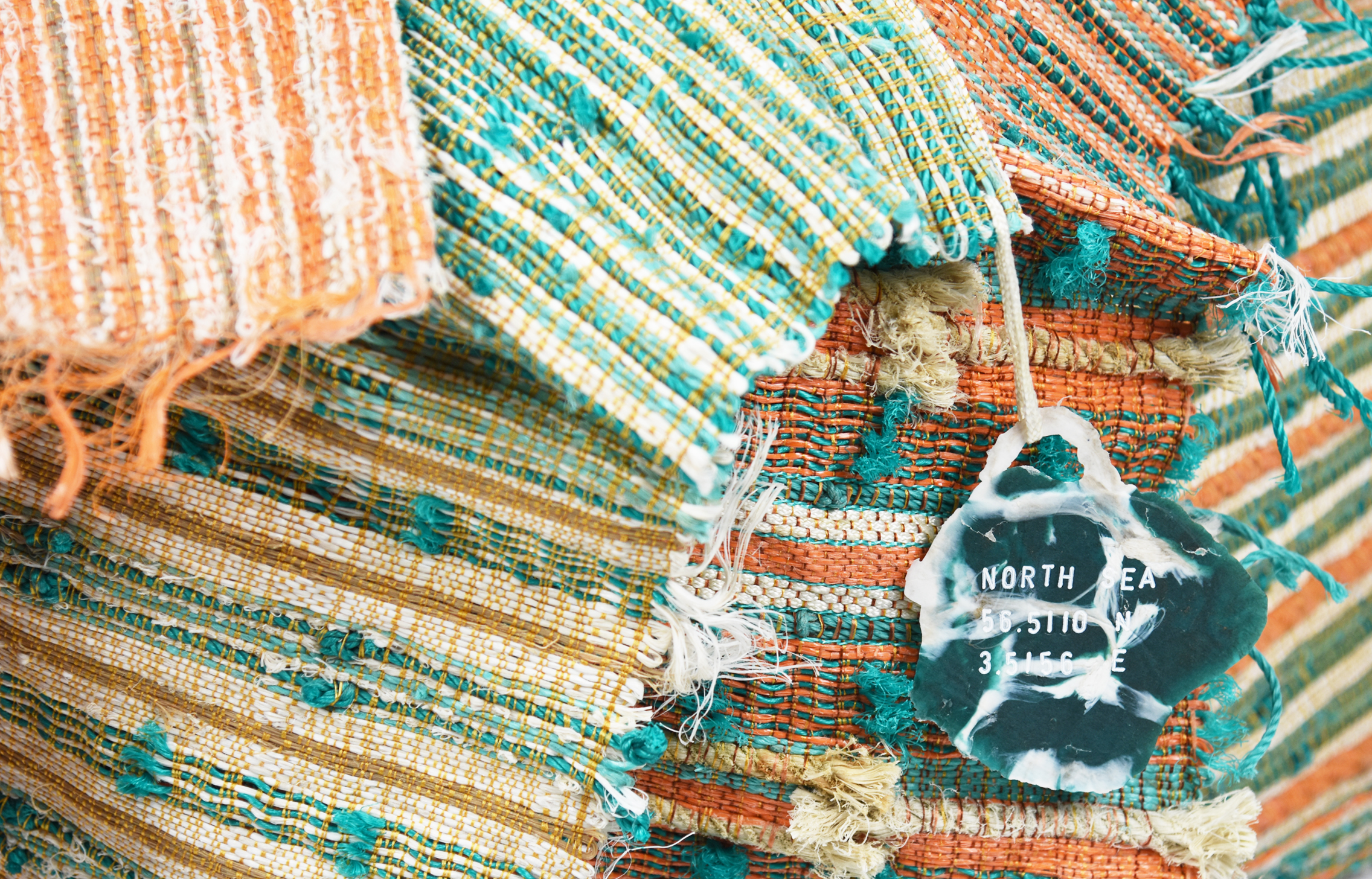
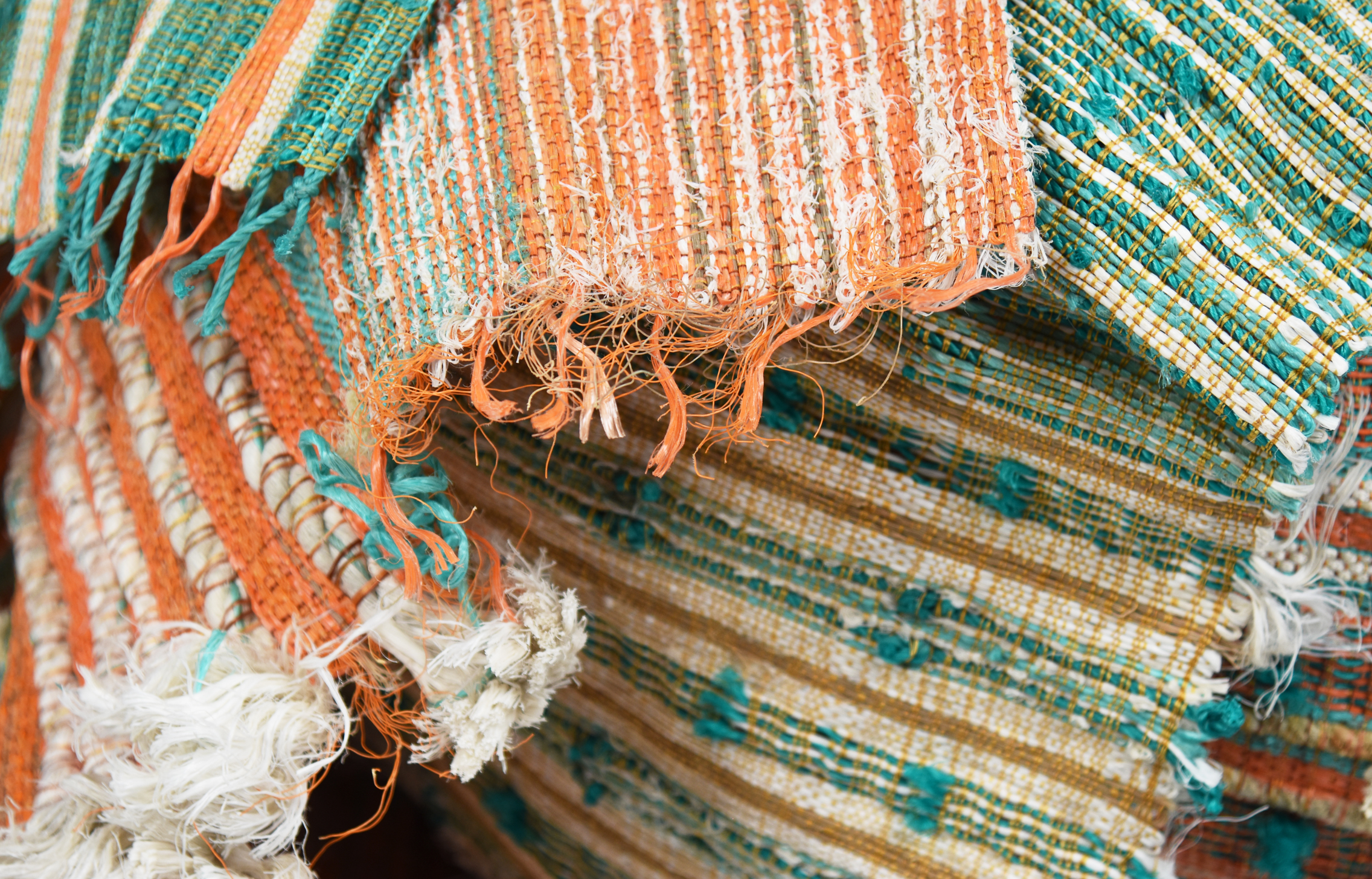
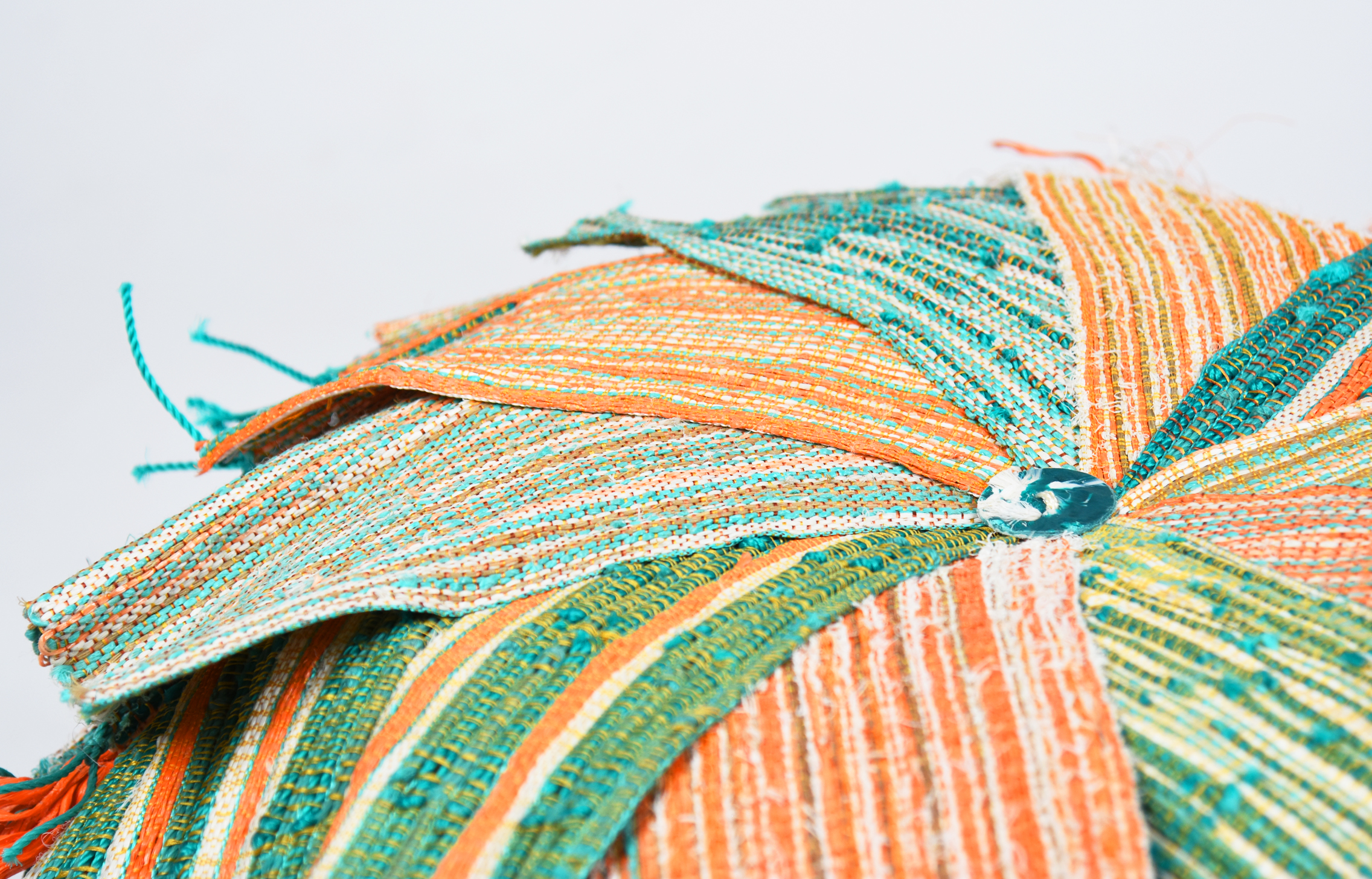

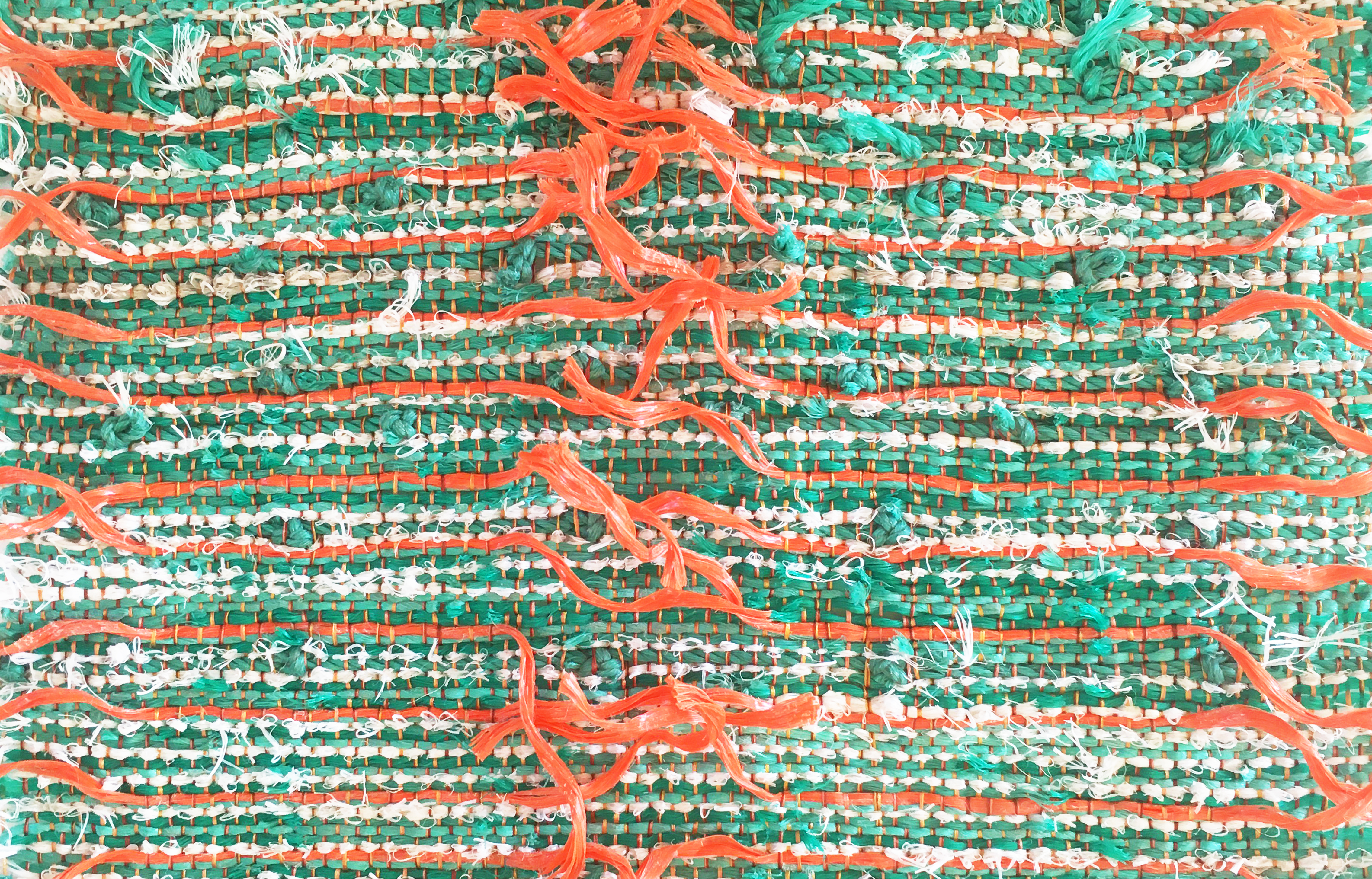

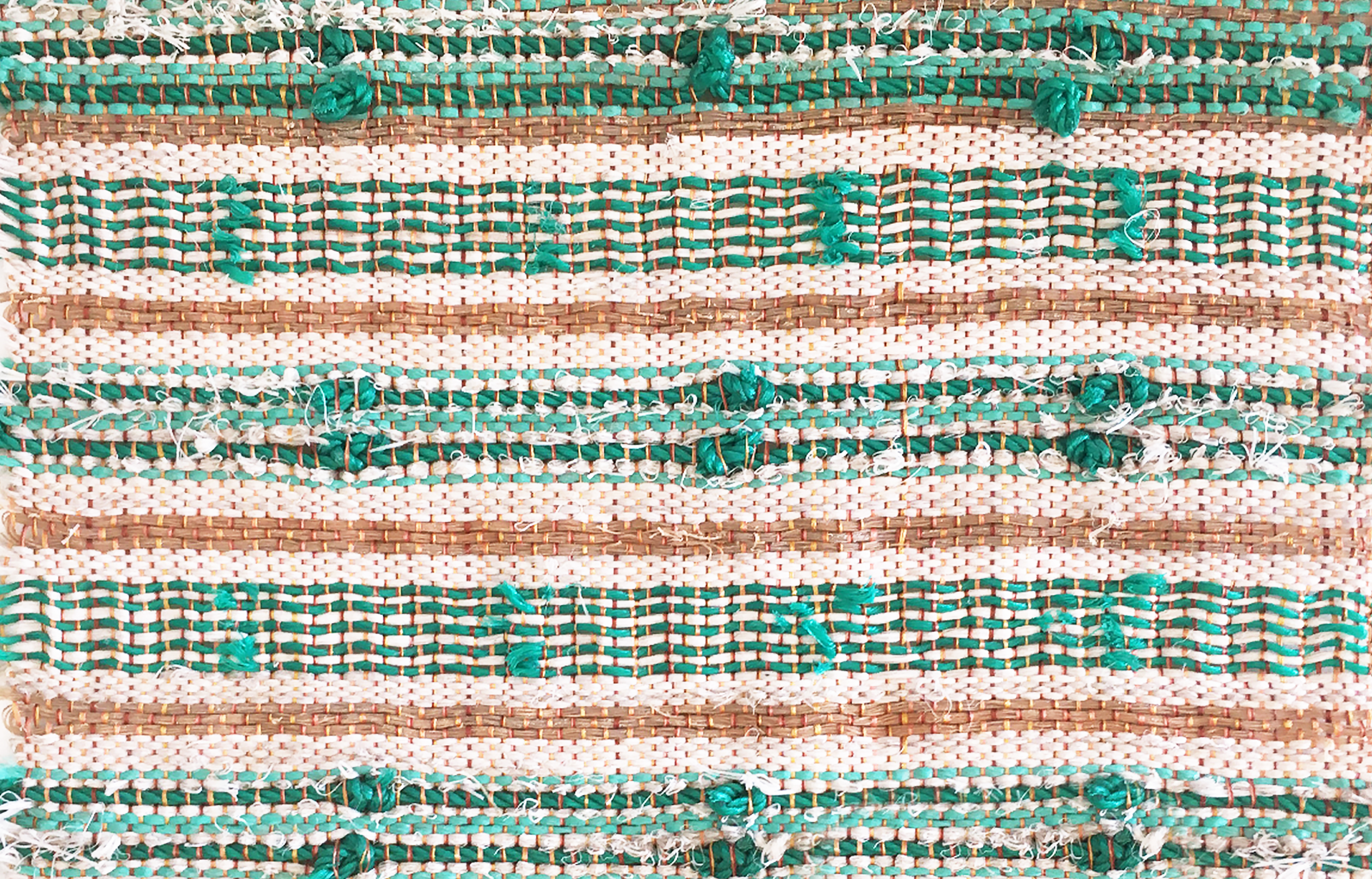




The seabed is often called ‘the biggest museum of the world’. The permanent collection it exhibits is predominantly made of plastic. Lost, abandonned or disposed, industrial fishing equipment accounts for over half of all plastic pollution in our oceans. Modern nets are usually made of artificial polyamides like nylon. Once in the ocean, plastic monofilament fishing line can take up to 600 years to degrade. Lost gear can drift through the depths catching whatever crosses its path, entangling and killing ocean life, also known as ghost fishing. Never did a material impact so greatly on life on our planet. It’s a modern symbol of survival and longevity, a material best suited to celebrate the Anthropocene but at the detriment to the future of the planet.
The Ghost Urchin is made of 10 panels woven with ghost fishing gear retrieved from The North Sea by Ghost Diving and Healthy Seas. Through the process of untangling, unravelling, sorting and cleaning the Ghost nets, I set up a warp with nylon yarns to weave with this ‘immortal material’. With each net having a distinct texture, coarseness and colouring I was able to express tactile qualities similar to that of a sea urchin through my weaving.
Each panel is replaceable if damaged and the design allows for the woven ghost nets to be recycled as is when the time comes. The Ghost Urchin has a sandbag interior, designed to be filled and used at the seafront as public seating.
The Ghost Urchin is made of 10 panels woven with ghost fishing gear retrieved from The North Sea by Ghost Diving and Healthy Seas. Through the process of untangling, unravelling, sorting and cleaning the Ghost nets, I set up a warp with nylon yarns to weave with this ‘immortal material’. With each net having a distinct texture, coarseness and colouring I was able to express tactile qualities similar to that of a sea urchin through my weaving.
Each panel is replaceable if damaged and the design allows for the woven ghost nets to be recycled as is when the time comes. The Ghost Urchin has a sandbag interior, designed to be filled and used at the seafront as public seating.